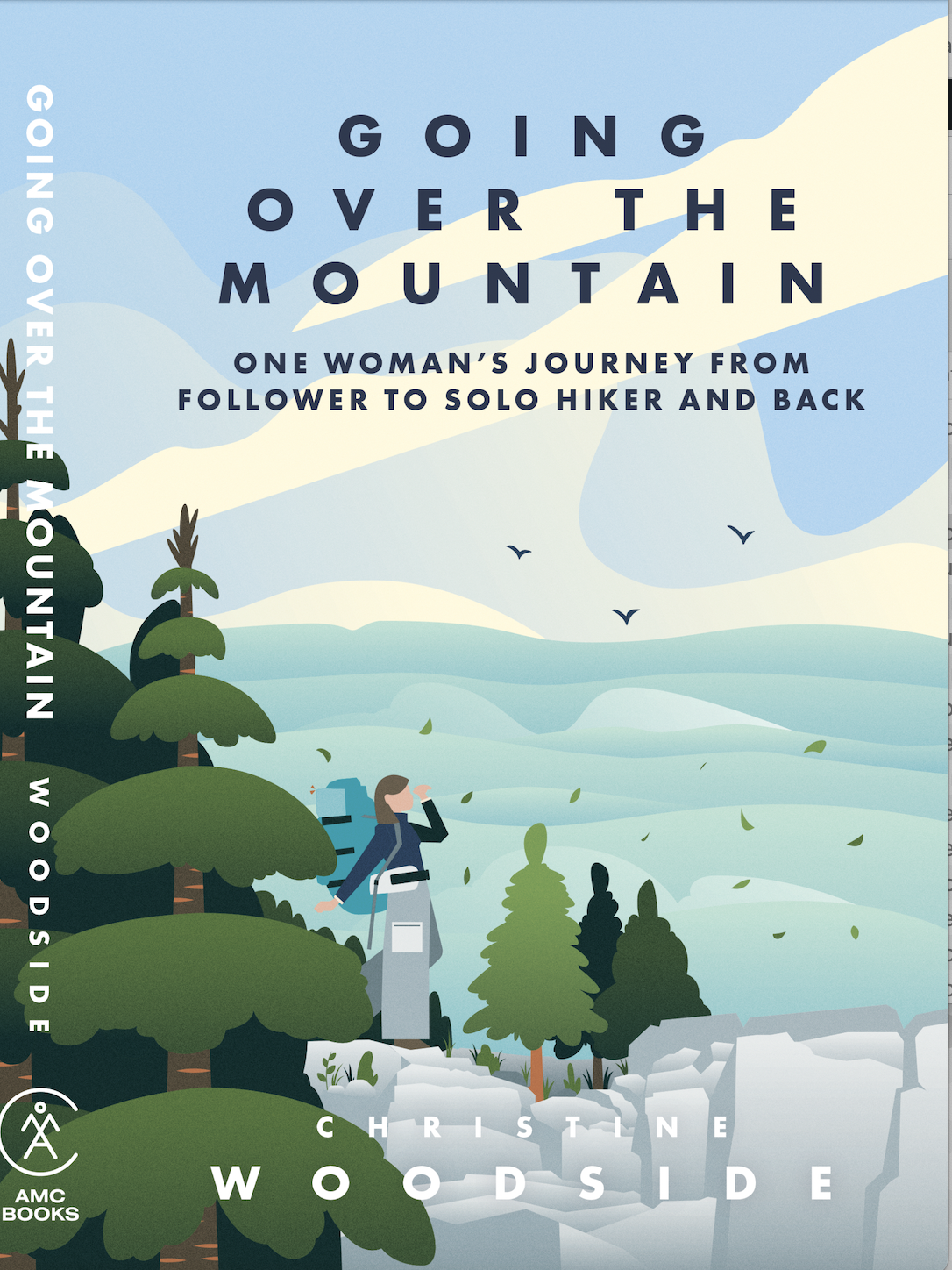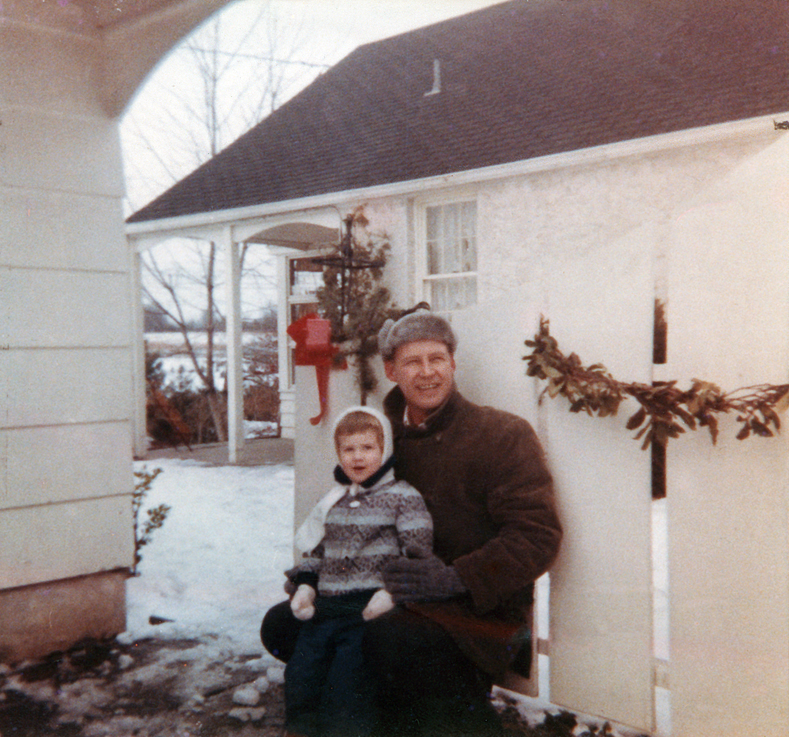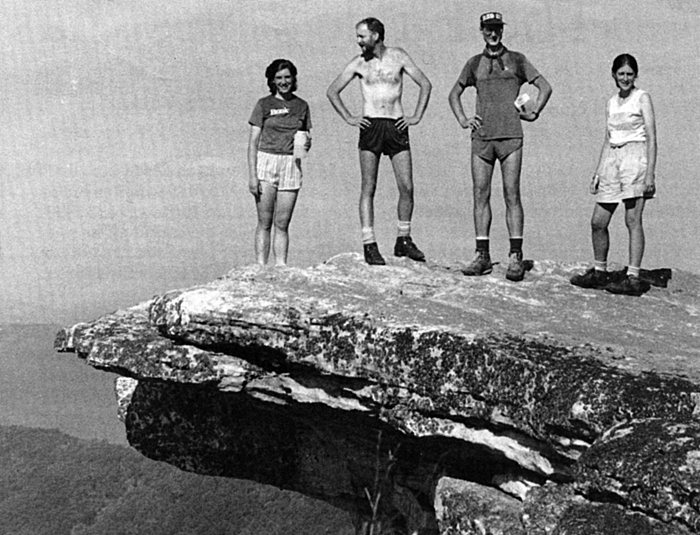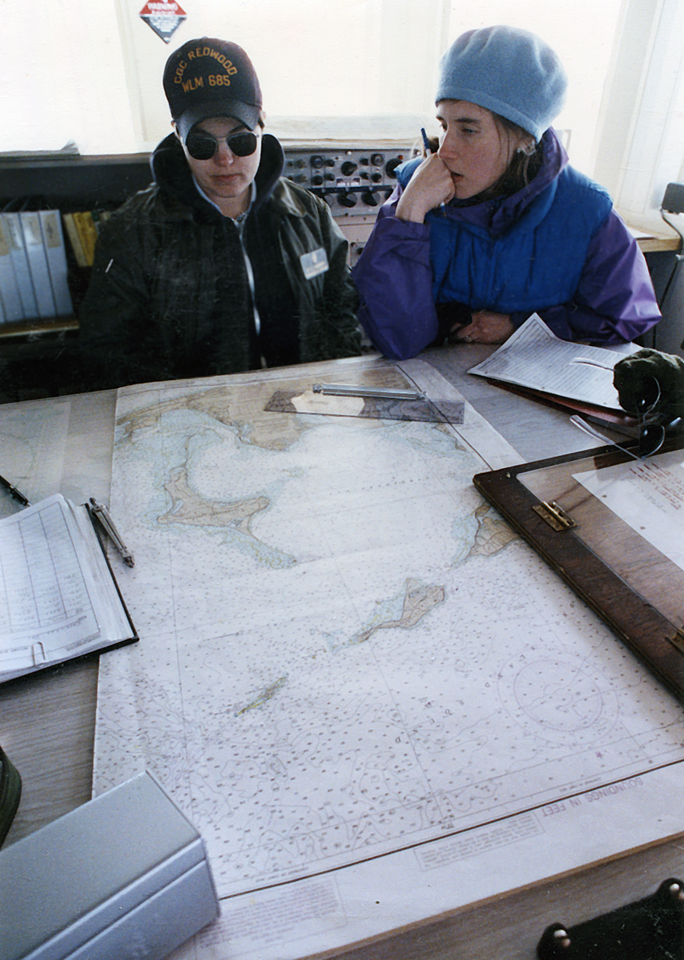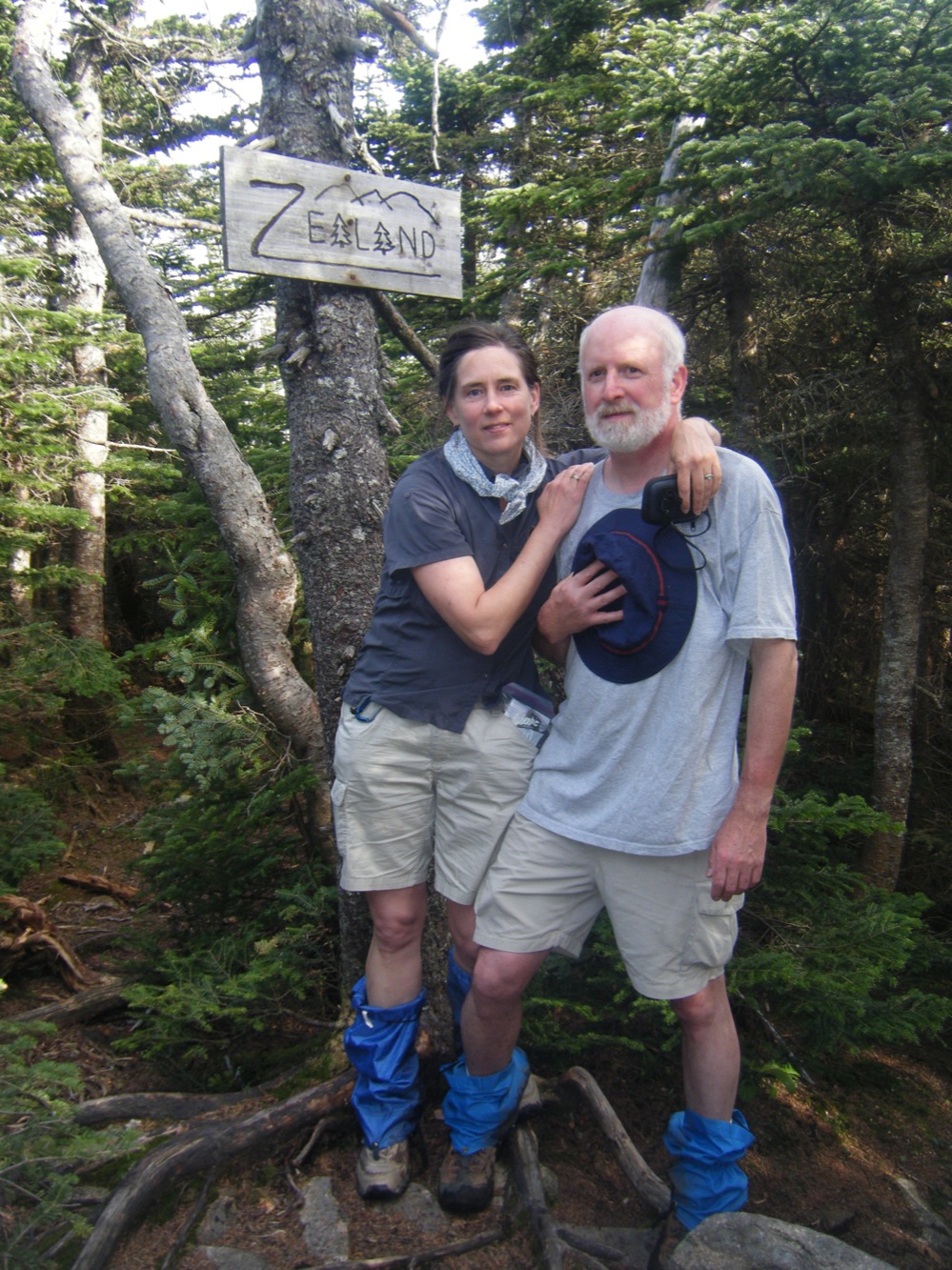Woodside Field Guide
39° 30′ N / 75° 2′ W
On the Woodside side of the family, I’m descended from tenant farmers in southern New Jersey. They arrrived there before the Revolutionary War. They worked hard and stayed. But my grandfather Amos Harris Woodside left farming as a teenager for a better life in Maryland and, later, Trenton. He was a union welder (I think), but during the Great Depression, when there was no work, he started a milk delivery business. My father got up at 1 a.m. in high school to help his dad deliver milk. Somehow after that he went to class. They talked a lot about everything during those early dark hours in the truck.
Hard work, making your own success, and talking things out became family traditions that all affected my decision to write and my writing. My father talked a lot about real life from the time I was tiny. He told stories of feeling lonely and sad while growing up poor. He was a solid, confident man who had been a professional soccer player.
39° 57’N / 75° 10′ W
My mother Gloria Nicholson Woodside grew up in Philadelphia, where her parents had grown up. Her father worked for the telephone company and was a ham radio operator and a trombone player. Her mother Viola was a petite jokester who raised her own three daughters and her niece. Gloria married Bob when she was 20. In her 40s, she started designing and stitching costumes for the Princeton Ballet. Another self-made hard worker. All of us Woodside children were born in Philadelphia. The family lived in Southampton, Pennsylvania until 1963 and then moved to Princeton, New Jersey in 1963.
40° 21’ N / 74° 40’ W
Myt three older brothers and younger sister enjoyed a lot of independence in the Princeton of the 1960s and 1970s. We could get ourselves anywhere in town on our bicycles. We pedaled often to school and across the Princeton University campus to get to Episcopal church choir practice. The choir loomed large in how we practiced our faith and made sense of authority. Church choir was where my brother, John, and I learned to read music. One odd highlight of this period: I played the raven in Trinity’s production of “Noye’s Fludde,” a Renaissance era interpretation of the Ark which Benjamin Britten had composed into a church opera. My parents gave us piano, clarinet, and dance lessons, and sent me to a summer camp for girls, Les Chalets Francais, on Deer Isle, Maine.
By age 12 I was under the spell of the school system’s traveling creative writing teacher Eugene Doherty. He loved Ernest Hemingway and could quote The Old Man and the Sea. In his class, I knew I wanted to be a writer.
My other major ambition was to be the first female in my family to finish college. But my senior year of high school, every college I applied for rejected me. I was devastated. I applied that June to Emory University, and got in: I went there for a year and a half. I transferred to the University of Pennsylvania halfway through sophomore year. I loved Philadelphia and I settled in happily to the American Civilization department and as a reporter for The Daily Pennsylvanian.
39° 57’N / 75° 10′ W
My first journalism job was typesetting and helping with production at Town Topics, a weekly in Princeton, after sophomore year in college. I interned a little paper in Burlington County, New Jersey, called, unbelievably, The Little Paper.
At 22 I had my BA and was answering telephones and typing obituaries at the Philadelphia Inquirer. Soon after I took a job as assistant editor at a weekly paper in Center City Philadelphia. The Welcomat (yes, that was the name then) was a former shopper paper on its way to being an alternative weekly. I worked for the business writer Dan Rottenberg as the only fulltime staffer.
And so I wrote articles and a column on a portable electric typewriter on the third floor of a row house near 18th and Ludlow streets. I had promised to also take photos in order to earn $250 a week. I shot three rolls of film a week and gradually developed a visual sense. I commuted around the city by bicycle. I hosted classical music and experimental radio shows on WXPN-FM.
34° 32′ N / 83° 59′ W to
45° 39′ N / 68° 42′ W
and, finally—
41° 23′ 8″ N / 72° 26′ 8″ W
My husband Nat and I left our jobs in spring 1987 to hike the Appalachian Trail, from Georgia to Maine. This was a huge turning point. After the AT hike, my artistic and journalistic focus turned toward the natural world, climate change, forests, and history. After the AT, we moved to Connecticut, where I worked at The Day, a regional daily, and he taught science for years.
Daughters Elizabeth and Annie were born in 1988 and 1990.
I covered many beats and edited news and science reporters at The Day. I learned how to write better, faster, and to report with less fear. The lower Connecticut River had gone from “the world’s most beautifully landscaped cesspool” to an internationally regarded wetlands. These stories and my mountain experience propelled me into starting the environment beat at The Day. I was the environment reporter for three years, during which time I was chosen as a fellow of the Metcalf Institute for Marine and Environmental Reporting at the University of Rhode Island. I began my freelance career in 2000.
The backcountry rambler in me has met the editor and writer these last several years. In 2001, shortly after I began full-time, freelancing, I hiked the 50-mile Metacomet Trail section in Connecticut in sections and wrote about the journey for Appalachia. The same year I became editor of Connecticut Woodlands magazine for Connecticut Forest & Park Association. I also began volunteer trail maintenance for CFPA on the Mattabesett Trail in Middletown. In fall 2005 I became editor of Appalachia (published by the Appalachian Mountain Club). Ever since then, I have used mountains for networking, and even the occasional metaphor.
Connecticut Woodlands, winter 2005. My photo of site-clearing for a Big Y supermarket near the University of Connecticut in Storrs.
Restored prairie in West Branch, Iowa.
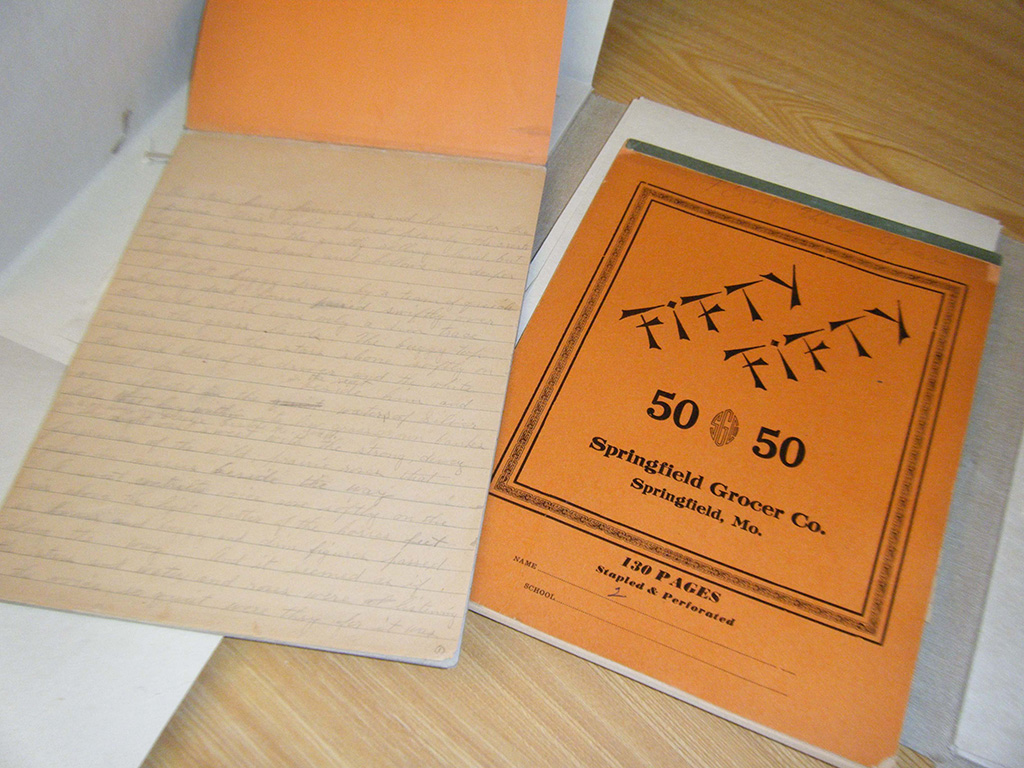
Manuscript of The First Four Years at the Hoover Presidential Library.
I have begun to recognize and even know the plants and animals of the lower Connecticut River Valley, where (when not traveling to the mountains or the occasional reporting trip) I lead a simple but intense life of work, hiking, trail running, caring for my poodle, Talley, growing vegetables and blueberries, and attending St. John’s Episcopal Church in Essex. My husband and I have been married since Ronald Reagan was in the White House. Cold nights find us by the wood stove at home.
Observing nature while hiking or doing trail maintenance nurtures most of my new ideas for writing. It also just takes me out of myself and into the realm of doing. Americans are always in a hurry. When you’re hauling a rusted axel out of the woods (or asking teenagers to do it for you) you can’t hurry. Then you start to notice hawks.
From about 2000-2015, I traveled to the Midwest regularly researching Libertarians on the Prairie: Laura Ingalls Wilder, Rose Wilder Lane, and the Making of the Little house Books. The book came out in 2016 from Arcade Publishing. This book tells of the political themes within the engaging pioneer stories of Wilder’s “Little House” pioneer series, put there by Wilder’s secret collaborator, libertarian thinker Rose Wilder Lane. The article that got my book going appeared in the Boston Globe. I was a keynote speaker at the Herbert Hoover Presidential Library in 2017 and have spoken at many bookstores and arts centers. I took my research to a panel about Rose Wilder Lane at the 2017 Social Science History Association conference (our second panel scheduled for November 2020 was postponed to 2021).
In 2012 I officially summitted my 48th 4,000-footer peak in the White Mountains of New Hampshire, with a quiet hike up to the top of Mount Monroe.
In 2014 I spoke about the mystery of my father’s past at a Moth Story Slam in New York City.
I earned my master of history degree in 2019 from Arizona State University. That fall I started teaching journalism history at the University of Connecticut. In 2023, I published my wilderness memoir, Going Over the Mountain. In 2024, my first fiction story was published by Running Wild Press. Onward to the next book about New Jersey farmers!
